For any of us who watched Disney’s Lady And The Tramp, there is one song lyric that we remember with ease.
“We are Siamese if you please, we are Siamese if you don’t please!”
In case you forgot, we’ve got the little reminder clip for you…be purrpared for it to get stuck in your head all day long!
Siamese cats are one of the oldest cat breeds in existence. These beautiful ballerinas of the cat world have captured the hearts of millions of cat lovers worldwide. We know that they are instantly recognized for their masked faces and striking baby blue eyes. But what else do you know about these “chatty cathy” cats?
Take a look at our fun little collection of facts about the Siamese cat breed…
Such Purrty Colors You Have
Most of us know the Siamese for having a light-colored cream body with a sooty masked face. The Siamese is actually recognized by the Cat Fanciers’ Association for 5 distinct markings labeled as “points.” The Siamese color points include: seal, lilac, chocolate, flame, and blue.
Please note: There are a few sites that report more colors/points of the Siamese cat breed, the five listed above are just the most common ones seen in today’s world.
Cross-eyed Kitty
Have you ever met a Siamese kitty that was cross-eyed? While it’s not natural for a Siamese to be cross-eyed, it’s not entirely unnatural either. So how does this happen, you might wonder? The crossed eyes of the Siamese cat developed naturally to compensate for a genetic flaw in their eye structure. Interestingly, this same genetic trait causes the coloration of Siamese. Although the cat’s eyes are not permanently crossed, traditional Siamese cats must cross them to see straight.
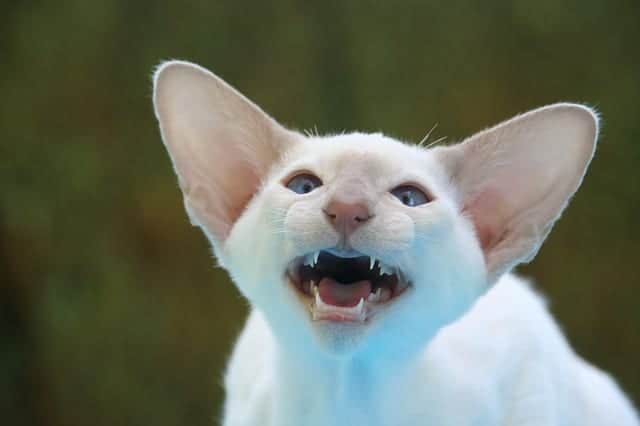
Since domestication of this lovely breed, Siamese cat breeders have worked diligently to breed away from the cross-eyed appearance. They also focused on the kinked tail that many Siamese have been reported to have. Crossed eyes and a kinked tail are both considered natural to the breed though. Street Siamese cats in Thailand have them and most, if not all Siamese cats, used to be cross-eyed.
Those kinked tails and crossed eyes are likely a result of genetics. But there are a few legends surrounding the explanations for the Siamese cats’ physical peculiarities.
According to one legend, a group of Siamese cats was tasked with guarding a golden, royal goblet. Performing their duties, the cats stared at the goblet with such intensity that their eyes crossed. And because they wrapped their tails around the goblet for extra security, their tails became permanently bent.
A Purrferred Cat Of Choice
There are many Siamese cat lovers that have a deep admiration for the breed, owning several of these lovely cats at a time. The origin of the Siamese cat breed is not entirely certain, but it is speculated that they lived in the royal palaces and with the Buddhist monks in Siam (now known as Thailand).
They slowly gained popularity in the United States in the 1800’s, but it wasn’t until former President Rutherford B. Hayes’ wife, Lucy, received one as a gift in 1870 that their legacy in the United States was furever cemented:
“I have taken the liberty of forwarding you one of the finest specimens of Siamese cats that I have been able to procure in this country,” he wrote to the First Lady. “I am informed that it is the first attempt ever made to send a Siamese cat to America.”
Temperature Controlled To A “T”
If you look at the distinct markings of the Siamese cat, have you ever stopped to wonder why their markings are located in the exact spots that they are? Well, as it turns out, these markings serve as an indicator for the “cooler” parts of their body. As kittens, regardless of their predetermined points, they are entirely white all over their body. By one year of age, the kitten’s will have developed their established color pattern. So essentially, the cooler the part of the cat’s body, the darker the fur.
Want to dive deeper into these interesting points that the Siamese cats’ possess? Check out a detailed Siamese scientific coat color breakdown below!
The color of a cat’s coat is determined by several sets of genes and the patterns of their coats are determined by modifier genes. Genetics 101, right? Well, Siamese cats have a special modifier gene that inhibits pigment from developing in the fur, resulting in albinism. But, thanks to the magic of science, the modifier gene for albinism can only affect the cat’s fur above a certain temperature—or between 100 and 102.5 degrees, to be more precise.
Once a Siamese cat’s body drops below approximately 100 degrees—or the cat is in a colder environment—her genes for coat color turn back on and carry pigment to her fur. Because a cat’s body is cooler around her nose, ears, paws, and tail, that’s where pigment is most commonly deposited on Siamese cats.
Most Siamese cats are born completely white and develop their markings in the weeks following birth. Why? Because the womb is very warm and blocks the cat’s color gene from reaching her fur. Following birth and being exposed to the cooler atmosphere for a few weeks, Siamese kittens will start to develop pigment around their faces, tails, and paws.
And this is not just a theory, it’s been proven through scientific research!
Scientists first tested the idea that Siamese cat coloring is temperature dependent in the 1930s by bringing Siamese cats to Moscow and caring for them in rooms kept at -3oC to 16oC (about 26oF to 60oF). This contrasts with the warmer temperatures in which the average pampered house cat lives. While the cats’ bodies were cream colored when they arrived in Russia, the cats eventually shed their fur and became noticeably darker in the cooler temperatures.
Baby Blues For A Specific Reason
While the Siamese can come in a variety of color points, all have distinct blue eyes the color of the sky. But why is this? Well, the gene that is responsible for the Siamese coat pattern also restricts the amount of pigment found in the eye–thus resulting in the signature pale blue color that the breed is known for.
Shy and Sweet, And Undoubtedly Chatty
The Siamese cat breed is well-known in the cat world–for a blaring feature; their increased vocalizations. For cat lovers who share their home with one, they can attest to those mighty meows. This is a cat breed that does NOT do well alone for extended periods of time. Often shy and reserved, they are still very affectionate with those that they trust and love. These cats are as calm and gentle as they are beautiful, and they do great in a home that loves their cat to be seen and heard.
Do you have one of these gorgeous felines in your home? Share your Siamese cat photos with us in the comments!
REMEMBER: ADOPT, DON’T SHOP; FOSTERING SAVES LIVES & SPAY AND NEUTER!
Related Story: Young Mama Cat Barely Survives Giving Birth; After Life-Saving Procedure She Can Finally Be A Kitten Again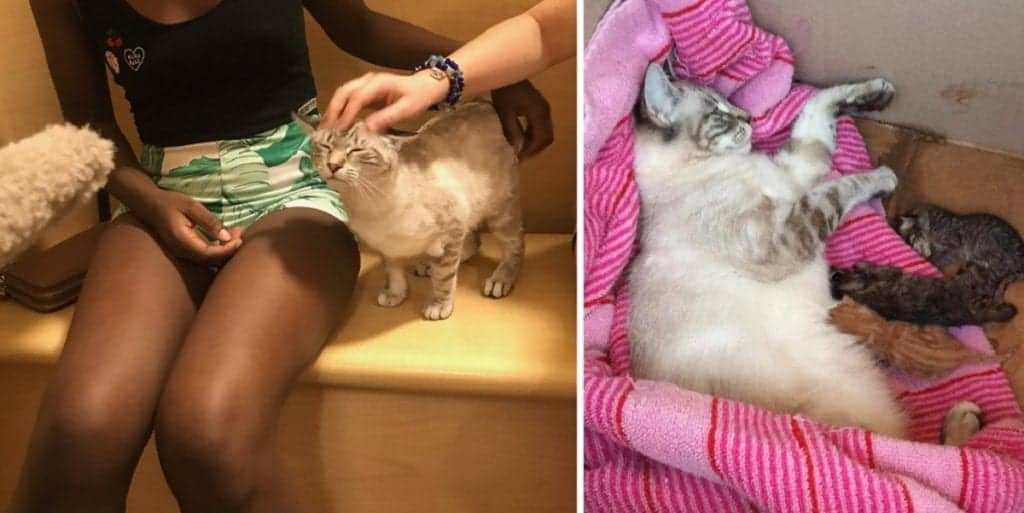 Related Story: Siamese Kitten Found In Middle Of Road Unable To Walk; Finds Strength In Foster Moms & New Best Fur-iend
Related Story: Siamese Kitten Found In Middle Of Road Unable To Walk; Finds Strength In Foster Moms & New Best Fur-iend





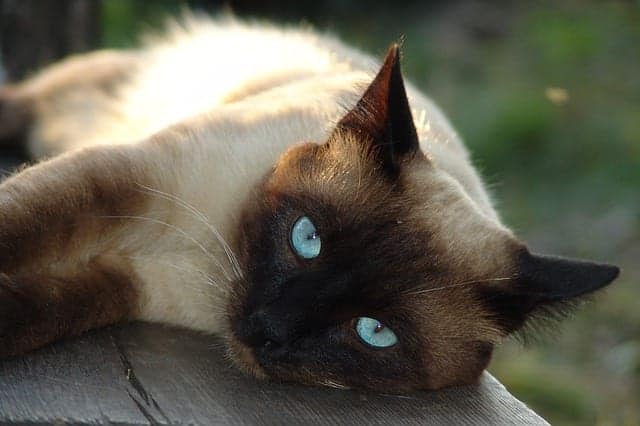


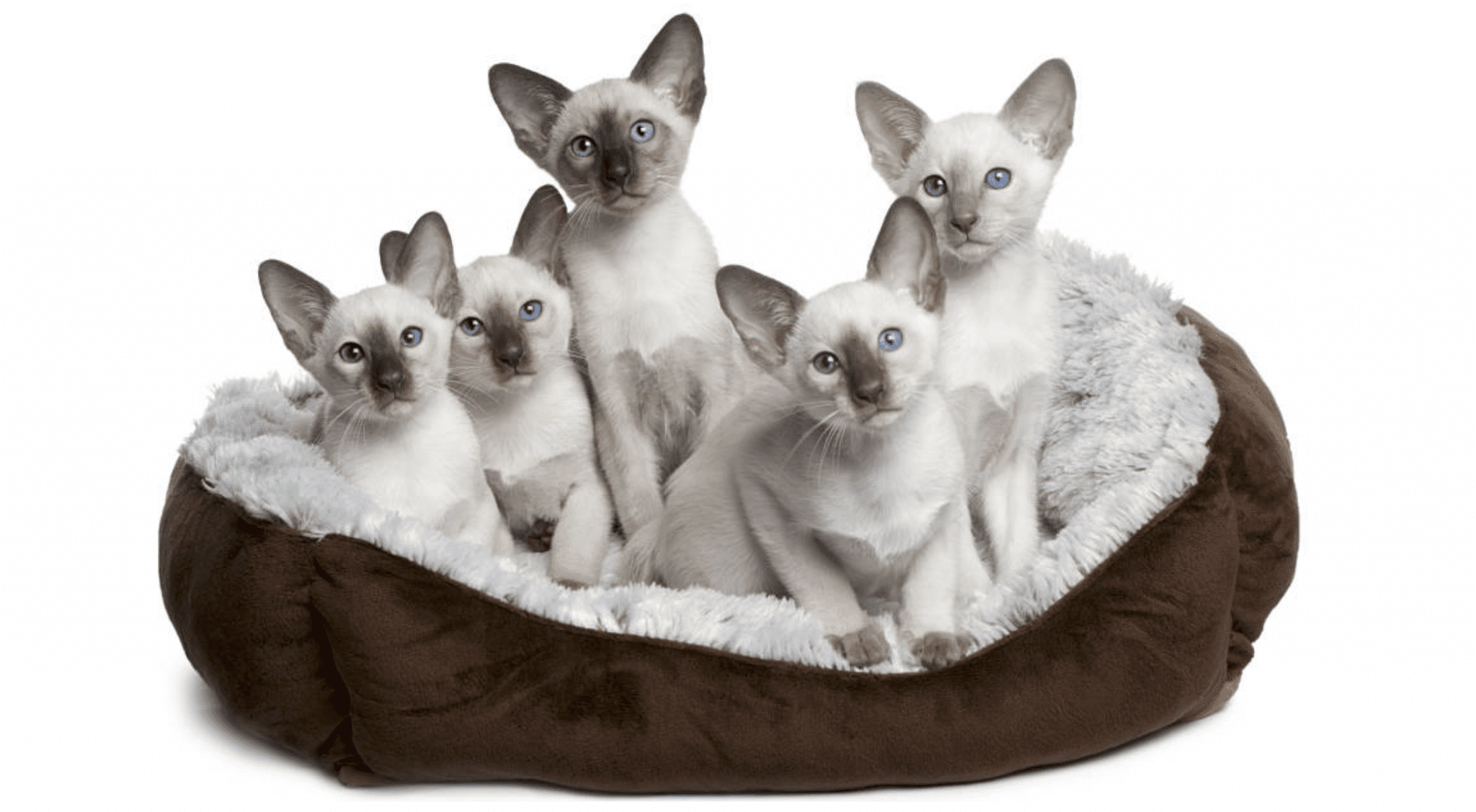

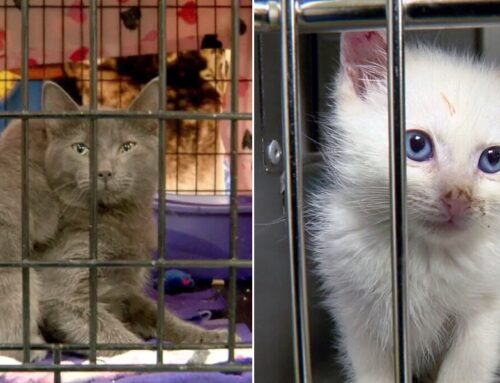
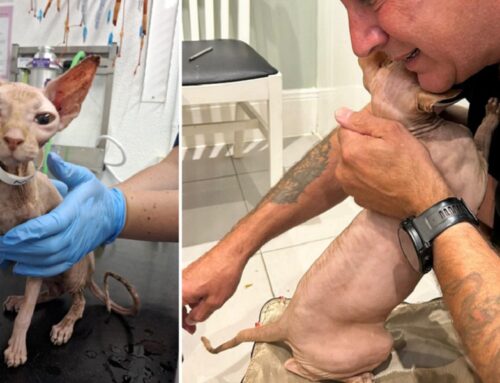
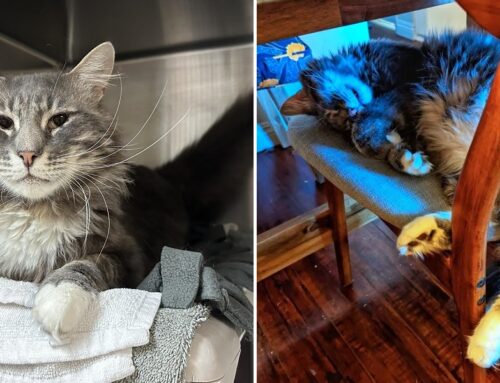




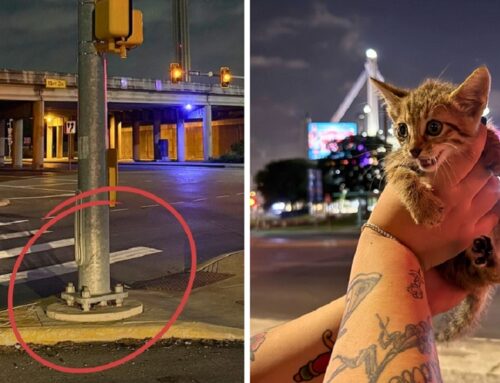
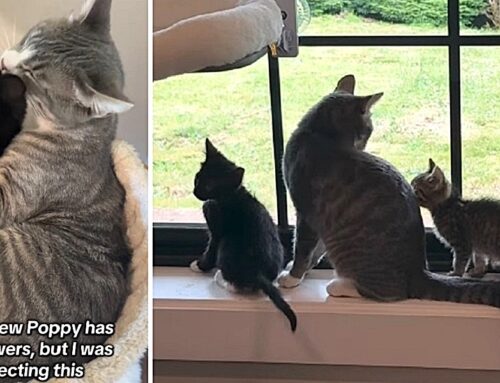

Siamese cats are always like MEEEEEOOOOWWW!
yeah, that’s great! i LOVE talking cats! cheers!
what @ calico? why r they usually born female?
the orange and the black colours are on the X chromosome for females (the male chromosome, the Y is quite short and has no colours on it) So in order to have a black and orange cat, you need 2 X chromosomes…which means the cat is a female! (the white colour is on another chromosome) ps Male calicos/torties happen rarely…that’s when the Xchromosome in the female’s egg hasn’t split properly, and the male actually has 3 sex chromosomes….XXY. It almost always makes them sterile. Cheers!
“often shy and reserved”
Really!? ??
i gotta agree withJerry. i sometimes think our cat is more extroverted then we are.. if we say hi to a neighbor she has to be included and cuddles even more with every visitor we have then even us. then again, she is a hymlayan ragdoll siamese.. maybe that’s the difference? even though i dont have any of the cool photos on my phone to post here like you asked , kiddo has lots of her yawning and doing silly stuff on his IG eaglep.adesignersjourney page. and we even have a utube we put up so we could have some back up video memories of her.. i think its on facebook under Eaglescat (one word) 🙂
Yup that’s too funny ! Although my baby blue and flame are quite shy. The others make up for it x
Siamese are far from shy and reserved. They are usually very friendly, bold and confident vying for attention from anyone they meet. Otherwise, great article!
I absolutely love these cats. I am the proud Mama of a little girl, seal point. She is the daughter of my long haired siamese that sadly has passed away. He was the most beautiful boy, with an unfortunate urethra issue that caused his bladder to solidify causing him great pain because he was unable to pass urine. His first surgery was a basic “sex change” operation which generally solved the problem, however, after one year, almost to the date, he was blocked again and there was no repairing this time because there was nothing left of his urethra to remove leaving only a rock hard, orange sized bladder and him in so much pain. I had to make the hardest decision of my life and sign a paper allowing the vet to euthanize him before he suffered any longer.
I have his little girl and she is my heart. She follows me everywhere, tells me when it’s time for bed and watches me like she is my body guard. I don’t know what I would do without her!
Anyways, thanks for letting me share my story, “our” story with you.
Cheers to the Siamese…if you please! ?
Mine has the sweetest meow…and chirps, I love how many different vocalizations he has
Here is our beautiful Flaming Chi To.
https://www.pinterest.com/pin/356065914289015859/
(I don’t know how to post photos here.)
He was dumped when he was a baby (approx. 7wks.). Rescued and taken to a shelter. Adopted by hubby and me when he was about 9 – 10wks. He is currently 6yrs. old.
He is a Colorpoint Shorthair – a mix of Siamese and Orange Tabby, though now considered a breed in their own right because two Colorpoint Shorthair parents will produce offspring with their coloring.
He has been deaf since birth. Has mild Cerebellar Hypoplasia. Has feline herpes. Plus he is a cancer survivor – first time he lost the third eyelid in his right eye, then a tumor formed in his right upper eyelid and it was decided it would be best to remove the eyelid and eye.
He he is our darling boy and he has more purrsonality than any other cat we’ve ever shared our home with.
Another legend about these cats regards a Siamese princess who wanted to bathe in a deep pool. Not wanting to lose her rings, she placed them on the tail of her cat, who obligingly kinked the tip of its tail to keep them from sliding off.
Captain came to me via ARF, Animal Rescue Foundation, in Concord, CA. He is a big boy, 18 lbs and is now 11 years old. Except for the tips of his ears and his tail, which are light red, he was completely white, and his eyes are a beautiful blue, but slightly crossed. I fell in love with him instantly as he wrapped his little body around my ankle. Today his back color matches his ears and tail. His fur is quite long and wavy and never lies flat. He’s very affectionate and very talkative, but not loud like the typical Siamese cat. His temperament is more like the Himalayan cat.
I have a Siamese who was feral and I finally captured her when she had a litter in one of the boxes I have out for strays. None of her kittens are Siamese in color but a black one does have a tail that is bent on the end. Do you think that is an inherited trait or an accident at birth? Just curious
I think “The Aristocats” was MY gateway drug to Siamese cats! I’ve had just two over the years, but they will always be closest to my heart.
Oh! I see somebody else has already covered the point I wanted to make, that the “goblet” story about the tail kink is nonsense, it was the princess tying a knot in the tail to keep her ring from slipping off!
Yes, there are many color variations, but I think Sealpoint is what will always be the “real” Siamese to me.
Also wanted to mention one of their relatives, the Himalayans, who have the same color pattern but wear it on lonnnngggggg fur coats! I believe their temperament is a little less eccentric than the Siamese.
Ah well. Right now I have a petite little tortoiseshell and a big floofy boy who, if he isn’t Maine Coon, is wearing a dam good disguise. Unfortunately they don’t get on too well together, they’d look adorable cuddled up! Well anyway, hurrah for Siamese! They’re certainly a breed unto their own, very clever and affectionate, although very often they will choose one member of the household as “theirs” — all others are merely tolerated! So, Siamese Forever!!!
i heard that siamese were originally royal cats. They were bred with kinked tails so that when princesses went swimming, they put their rings on the cats’ tails and the kink kept the rings from falling off….cheers!